Nacionalinis M. K. Čiurlionio dailės muziejus
V. Putvinskio st. 55, LT-44248 Kaunas
Institution code 190755932
The Devils Museum in Kaunas grew out of a private collection. A local artist, Professor, public man Antanas Žmuidzinavičius (1876-1966) began to collect figures of devils in 1906. The story related to the beginning of this collection is really unusual. In 1906, during an exhibition of folk art, the artist was presented with a wooden sculpture of a devil. Another strange coincidence happened in the same year. The writer, priest Juozas Tumas- Vaižgantas brought a wooden sculpture The Trampled Devil (made in the 18th century) to the artist on his name day on the 13th of June, in which Saint Michael Archangel stamping the devil stood. However, the sculpture was so big that the priest simply cut off the saint and brought only the devil to the artist. The wish was also unusual – to collect devils for the rest of the artist’s life. Hence, gradually devils from all over the world came to the artist’s home. Antanas Žmuidzinavičius planned to collect thirteen baker’s dozens – 169 devils, however, he collected twenty dozens – 260. All of them were presented to him by his friends, the like-minded, pals.
Kipšas ( the dickens), pinčiukas (the deuce), Bevardis (the Unnamed), Bekelnis (without trousers), biesas, ponaitis (the lording) – these are just a few names, the number of which total more than a thousand in the Lithuanian language. Who is this mysterious creature? Who is the owner of these names numbering a thousand? Not everyone dared address him by name. This mystery arouses the interest of many people even in the present century of science and novelties. This is a strange and unpredictable mythological character intriguing us with his sly and tempting offers, constantly causing indignation over his unacceptable behavior and sometimes arousing even pity for him because of his naive gullibility and stupidity.
The devil is unpredictable not only by his evil-minded nature. His appearance is also very deceitful. He can be both a man and an animal. He appears unexpectedly, uninvited and unwelcome at village parties, wedding parties, one can encounter him when hunting or working in the fields. The devil comes disguised as an over-dainty gentleman, a musician, a German. One can guess that the evil spirit has visited him by the hump, the hooves, the tail, or by noticing the horns hidden under a hat. There are plenty of allusions to the devil’s relations with animals in Lithuanian folklore. He himself creates them, he has entire herds and he himself likes to appear in the shape of a domestic animal. The devil’s main animal is a he-goat, so it is not surprising that he turns into it. However, the devil can reincarnate into the shape of a horse, a ram, a pig, a cat, and sometimes even a bear, a hare, a wolf, or a raven.
The devil’s popularity in our culture is revealed in the more than 5000 legends and fairy- tales in which this mythical creature is mentioned. By the way, there are about 400 place names calculated in Lithuania related to the devil: Velnio duobė (the Devil’s Hole), Velniaraistis (the Devil’s Bog), Velniabalė (the Devil’s Swamp). These names vividly characterize the place of residence of this creature: bogs, swamps, dark marshes. He often remains hidden under stumps or rocks in the forest, is often met at inns and mills. The time of his reign is the night or a dark time of the day. It has been believed since olden times that one can get rid of the devil by saying prayers, referring to the saints, the rosary, or the cross. He is also afraid of the wild ash, flax, consecrated water, bread, and even the number "one".
The exhibition on the second floor shows devils created by folk masters, craftsmen, and authors of professional art, which were donated to the museum after the death of the initiator of the collection A. Žmuidzinavičius. The collection increased intensively in the 1970s and 1980s. The prevailing political system at that time was favourable for making this mythological character popular. It was not merely an artefact illustration of the past time folklore. The character of a devil became a convenient reflection of Soviet ideology to introduce the Catholic faith as a rudiment of the past to be destroyed. Anyone could make fun of the faith by portraying a devil, and it was a funny joke to impart to a negative character an "innocent" transformation into a cheerful, naive, trustworthy, charismatic, or even sympathetic personage. At that time, there was an increase in the production of folk art souvenirs with devil images (medals, wooden masks, sculptures, ceramic vases, mugs, candlesticks, whistles, cups), which were purchased as merry holiday gifts.
On the third floor, the gifts donated by foreign visitors are shown. These are devils and masks from the European,
American, Asian, African countries. The exhibits help to reveal the concept of a devil in the
ethnography of the nations of the world, demonological beings, celebrations. They are
displayed according to foreign countries from which the objects have come to the museum.
Most of the exhibited works are the gifts of visitors.
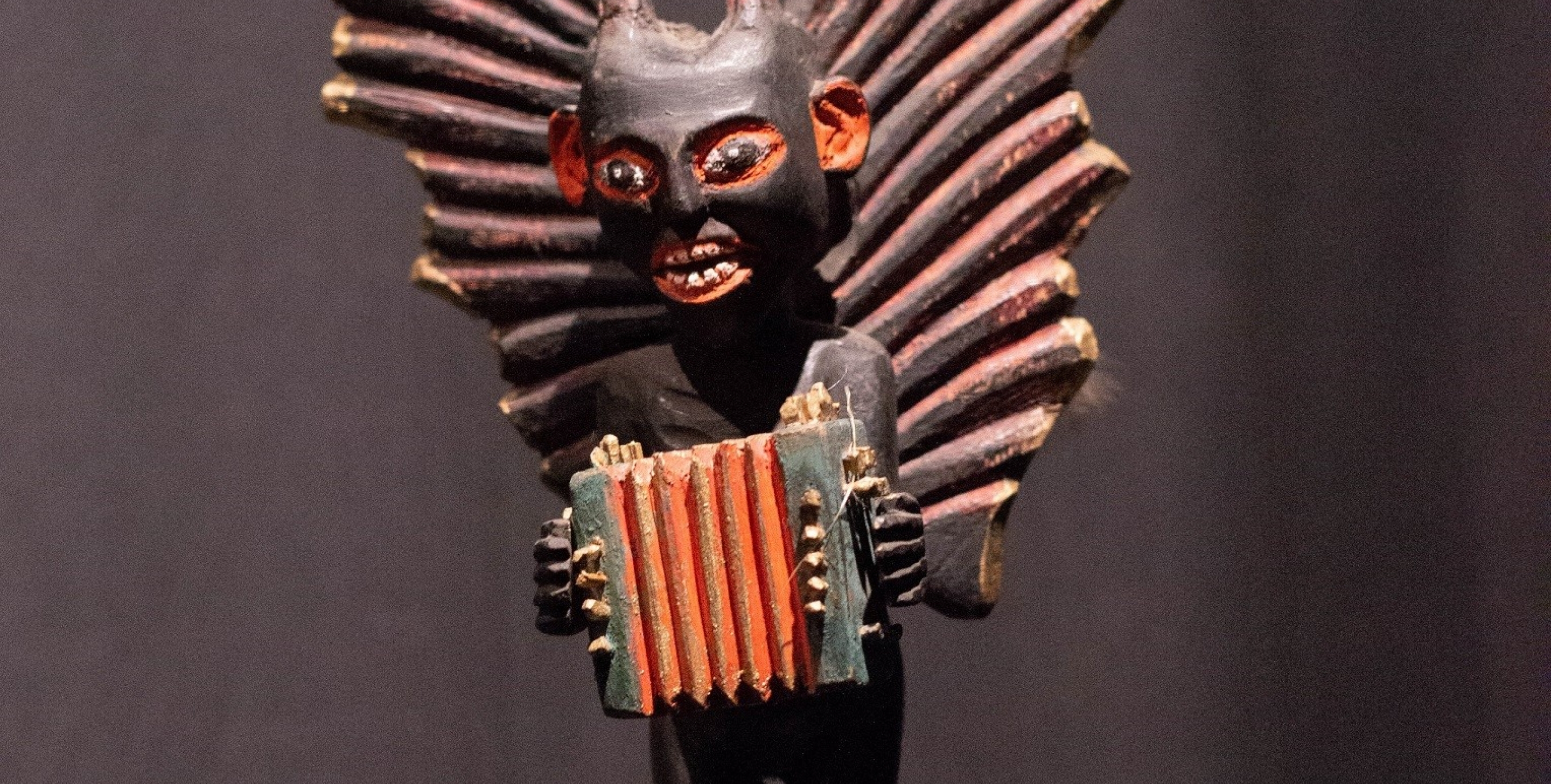
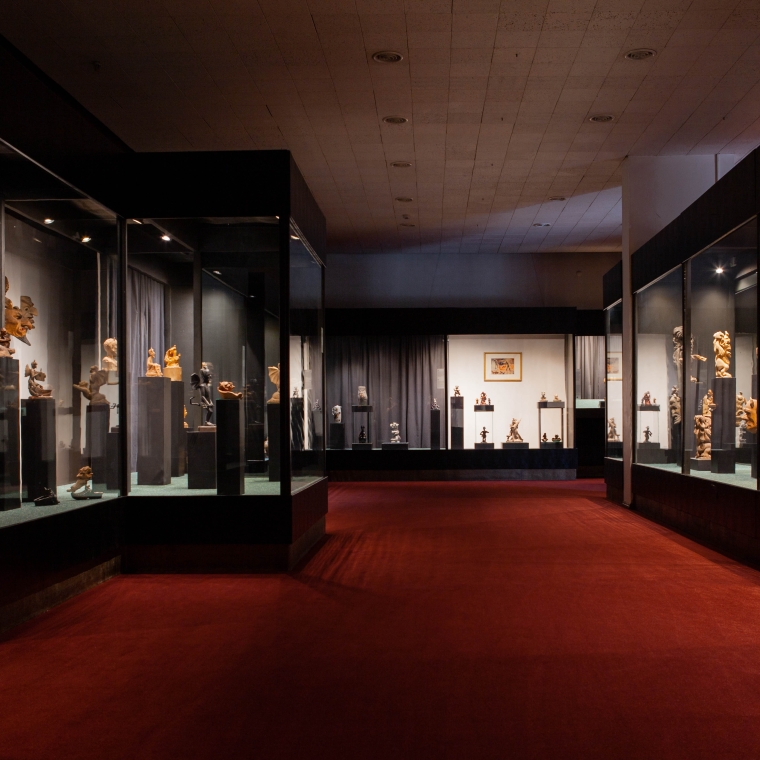
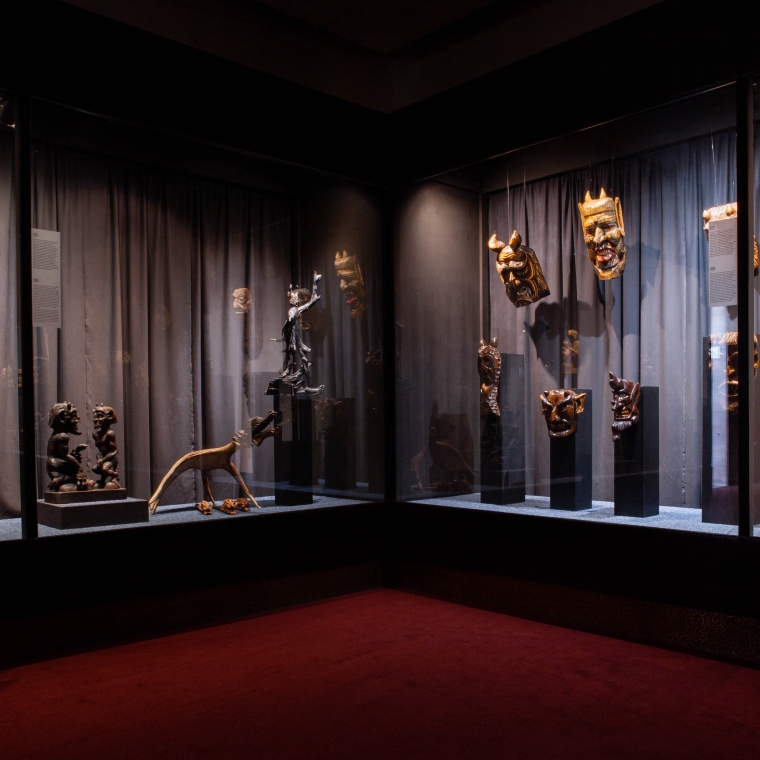
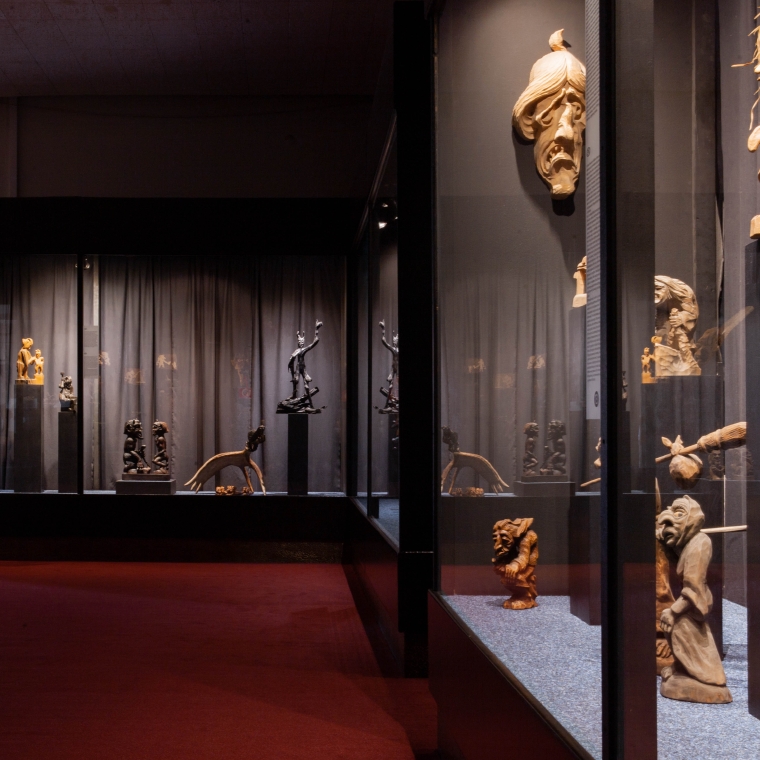
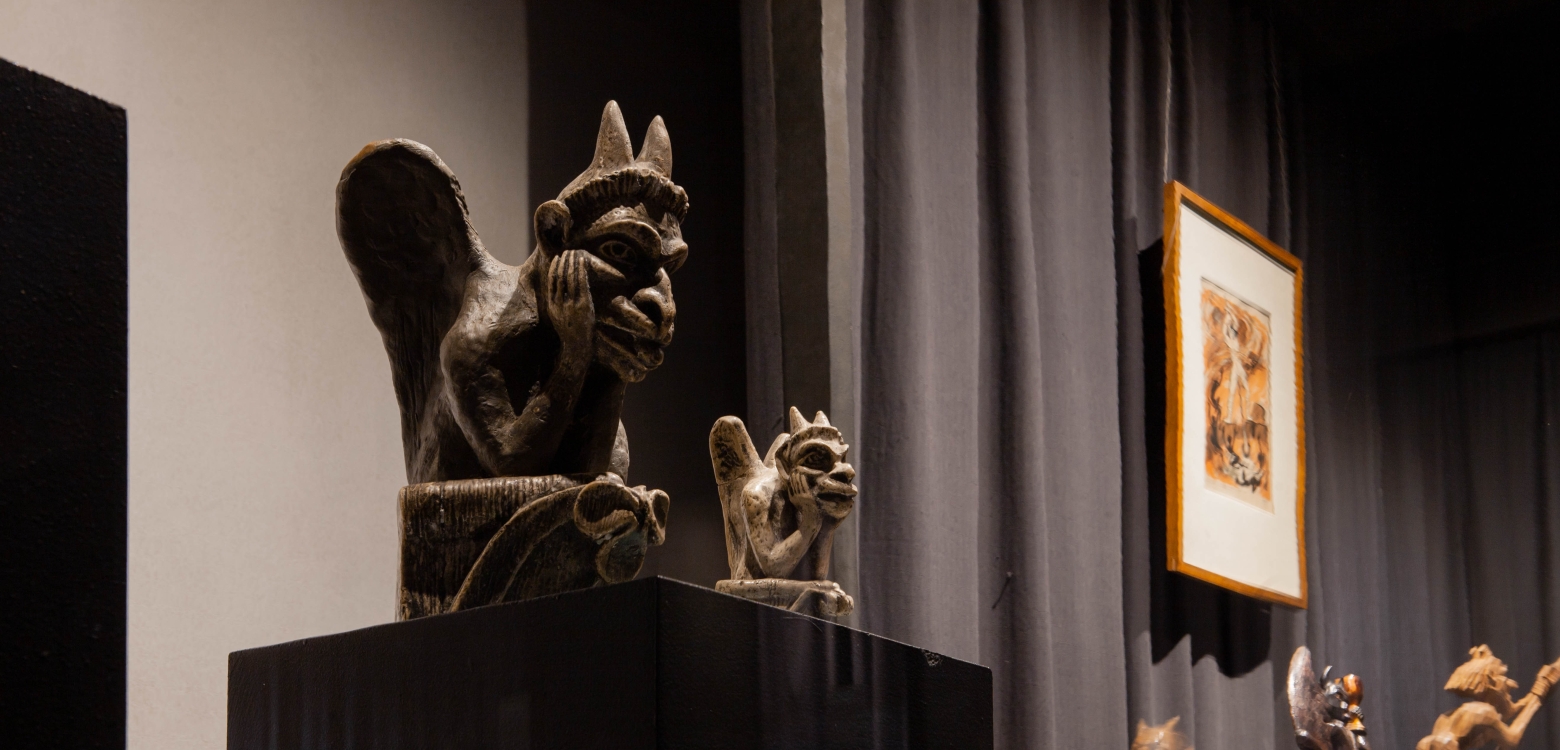
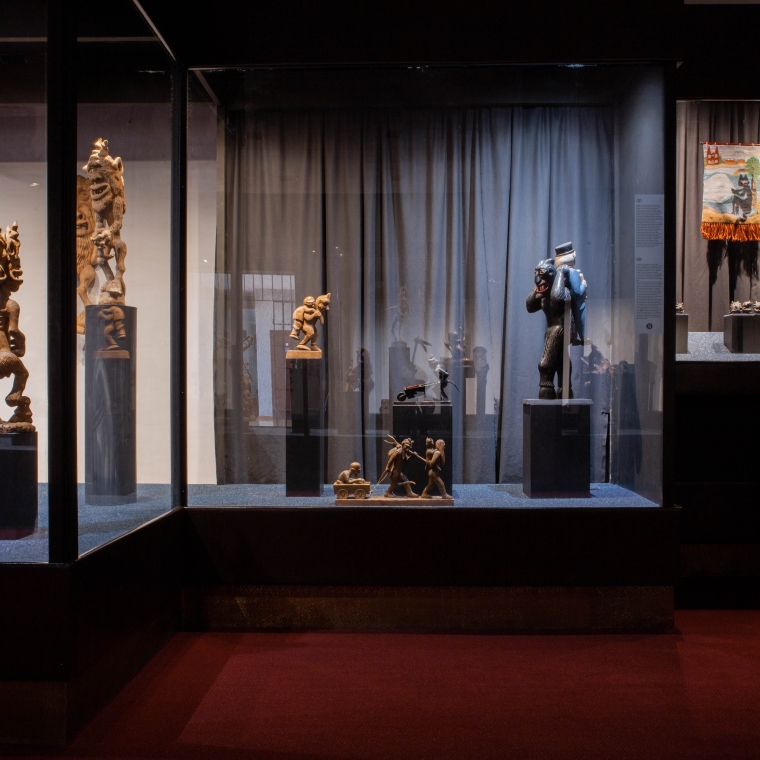
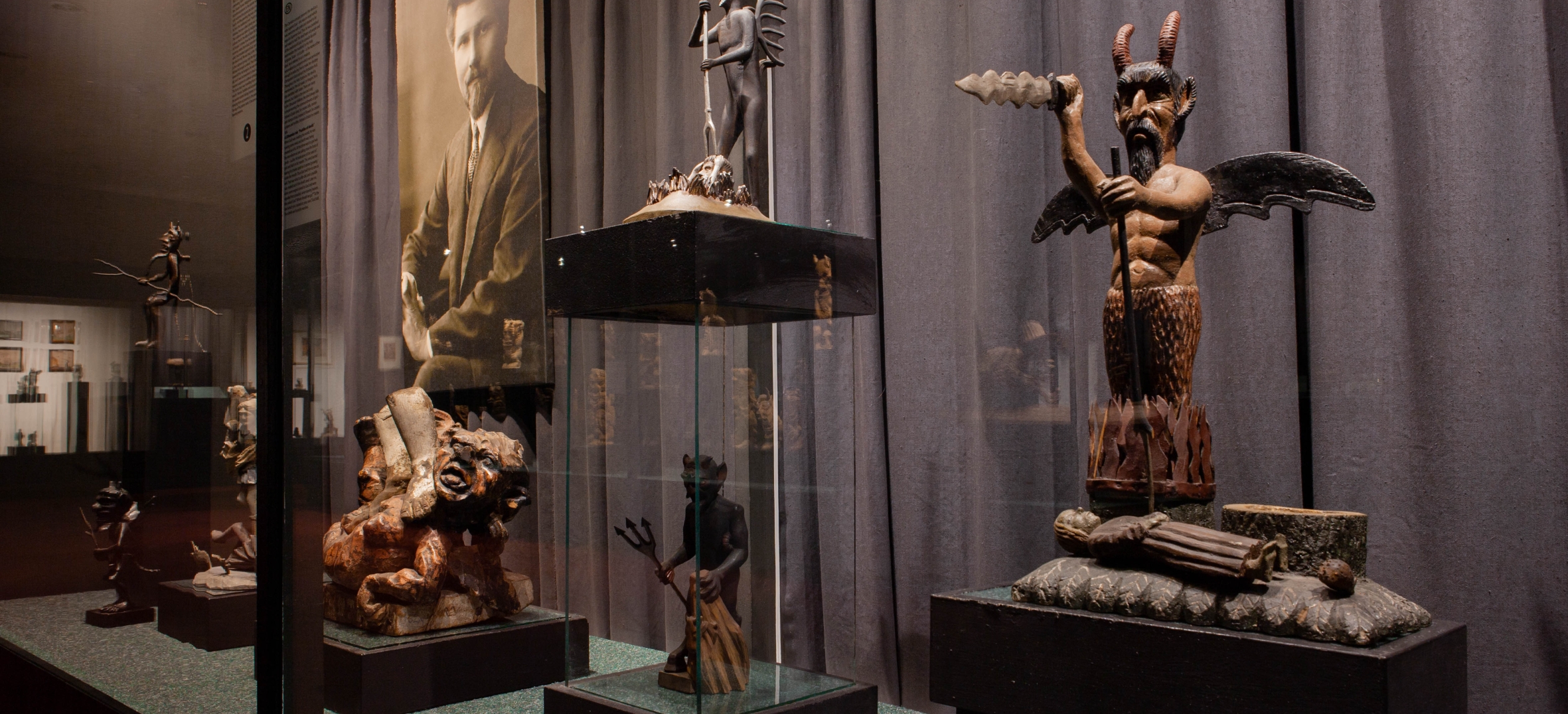









.png)




